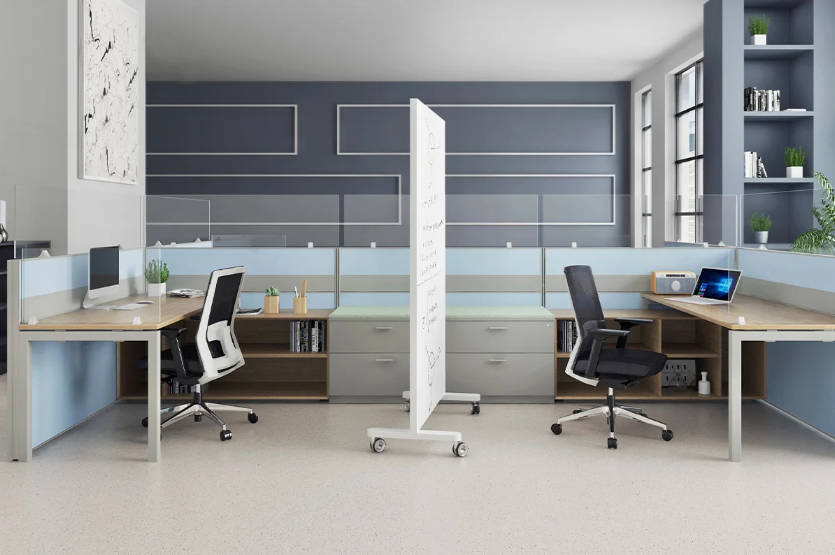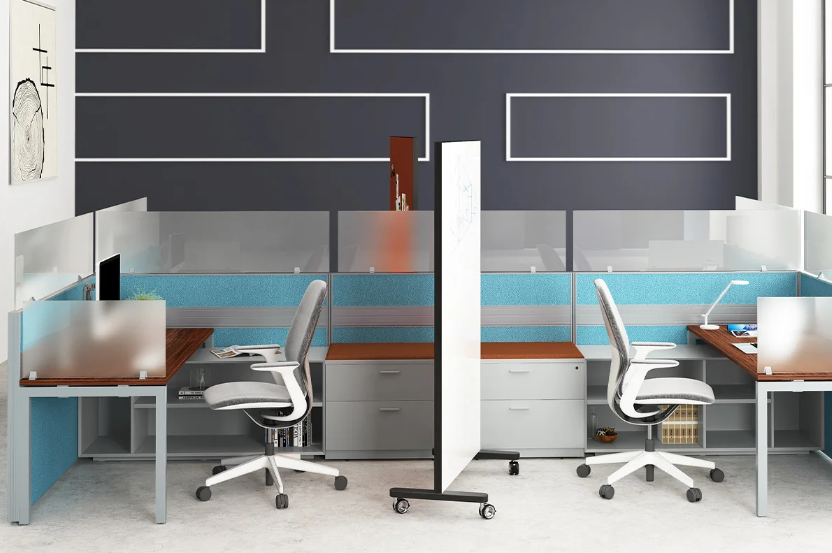
In today's rapidly evolving work environment, flexibility is no longer a luxury—it’s a necessity. The way companies operate, collaborate, and use physical space has transformed, driven by remote work trends, evolving business models, and the demand for higher employee satisfaction. But what is a flexible office solution exactly, and how can it reshape your organization’s productivity and culture?
This article dives deep into the concept of flexible office solutions, breaking down its core components, benefits, and applicability. Most importantly, we’ll share how M&W—an expert in workplace furniture solutions—translates these abstract concepts into practical, customizable environments using innovative products like our Private Cubicle-T8 combination system.
Why Flexible Office Solutions Matter Now
The traditional office setup—a fixed desk, static partitions, assigned workspaces—no longer serves the modern workforce. With employees often working hybrid schedules and organizations seeking to scale or pivot with agility, businesses need a flexible office solution that adapts as fast as they do.
In this guide, you’ll learn:
- The true meaning of a flexible office solution
- Its foundational design elements
- Who benefits most from it
- How M&W’s T8 cubicle system brings this concept to life
M&W has been at the forefront of modern workspace design for over 33 years. As a designated supplier for over 50 Fortune Global 500 companies, we don’t just create furniture—we deliver integrated, scalable office solutions that empower organizations to thrive.
What Is a Flexible Office Solution?
At its core, a flexible office solution is a workspace strategy that allows dynamic use of space, resources, and technologies to accommodate changing business needs. It blends open collaboration with private focus zones, embraces mobility, and utilizes modular furniture that evolves as teams grow or shrink.
Unlike rigid office environments, flexible solutions support both short-term operational shifts and long-term strategic transformations. It’s not about removing structure—it’s about creating intelligent, adaptable structure.
M&W’s design philosophy reflects this precisely. Our Private Cubicle-T8 combination exemplifies how modular design can adapt to different user needs, company sizes, and work styles while maintaining functionality, comfort, and visual appeal.
Core Concept: Agility and User-Centric Design
The foundation of a flexible office solution is agility—both spatial and functional. This means workspaces must adjust to multiple use cases: solo work, team collaboration, hybrid schedules, and evolving technology requirements.
M&W integrates these concepts directly into the architecture of our furniture systems. For example, the T8 series cubicles allow:
- Adjustable privacy levels through customizable partition screens
- Integrated whiteboards for shared information and team productivity
- Height-adjustable desktops to support ergonomic needs and task variation
The emphasis is always on user-centric design, where the workspace adapts to employees—not the other way around.
Key Components of Flexible Office Solutions
1. Shared Workspaces
Rather than assigned seating, shared work areas foster team collaboration and fluid movement. These areas require modular setups that can be easily reconfigured.
Our T8 combination makes shared spaces practical with tool-free interlocking partitions and adjustable components. Setup takes minutes—not days—giving teams autonomy over their environment.
2. On-Demand Meeting Rooms
Flexibility includes the ability to hold impromptu discussions or private meetings without reserving a room a week in advance. Mobile walls or retractable dividers combined with modular tables make this possible.
M&W systems can be easily integrated with space-zoning elements that define and re-define areas depending on needs, helping maintain a balance between focus and communication.
3. Hot Desking
Hot desking is a central practice in flexible workspaces, where desks are unassigned and used by different employees at different times.
Our T8 cubicle workstation supports hot desking through fast cable installation channels, easy connectivity, and intuitive organization tools like hanging storage, adjustable feet for uneven floors, and robust internal wiring systems.
4. Modular Furniture
This is the backbone of any flexible office solution. Furniture needs to be reconfigurable, lightweight, and functional.
With 60mm thick aluminum panels, the T8 workstation balances durability with portability. Its splicing method is screw-free, ensuring seamless rearrangement without professional installers. The built-in cable management channels keep tech clutter at bay while allowing full customization per local standards (US sockets, 86-type, etc.).
5. Tech-Enabled Environment
A flexible office isn’t just about space—it’s about connectivity. Flexible workstations need to support multiple devices, seamless power access, and network stability.
M&W’s integrated cable routing solutions allow incoming wires from the floor, wall, or ceiling, with separated paths for power and data to prevent magnetic interference. This future-proofs the workspace and aligns with modern IT needs.
Benefits of Flexible Office Solutions

1. Increased Productivity
By enabling employees to work where and how they feel most productive, businesses see improved focus, creativity, and output.
2. Cost Efficiency
Flexible designs reduce underutilized space and increase the functional value of every square meter. M&W’s modular solutions ensure offices scale up or down without expensive renovations.
3. Employee Satisfaction
Freedom to choose working styles boosts morale. Offering both private and shared spaces—like those made possible by our Private Cubicle-T8—meets diverse employee preferences.
4. Agility During Change
Whether adapting to pandemic policies or onboarding a new department, flexible spaces adapt in days rather than months. Our system allows for quick layout shifts while maintaining power, data access, and acoustic privacy.
5. Sustainability
M&W’s self-made components allow greater material efficiency and reduced waste. Our factory’s integrated production lines support green practices while delivering world-class quality.
Who Needs Flexible Office Solutions?
- Growing Businesses
As headcount fluctuates, companies benefit from workstations that can grow or shrink without construction.
- Enterprises with Hybrid Work Models
Organizations offering remote or rotating workdays require fewer fixed desks and more shared environments.
- Creative & Tech Teams
These teams often need to switch between collaborative brainstorming and heads-down coding or design work. T8 cubicles provide the necessary flexibility for both.
- Global Corporations
Multinational companies often operate across varied cultural work habits and space constraints. M&W’s modular furniture supports standardized layouts that are easy to replicate and adapt worldwide.
Flexible Office Solutions with Real Impact
So, what is a flexible office solution? It's a strategic approach to workspace design that puts agility, technology, and human experience at its core. It's about empowering organizations to evolve quickly—without sacrificing stability, collaboration, or comfort.
At M&W, we take flexible office design beyond theory. With innovative products like our Private Cubicle-T8 combination, we create modular systems that align with your business vision, employee needs, and operational scale. As a trusted supplier for over 50 Fortune Global 500 companies and a partner of Steelcase, we don’t just manufacture furniture—we engineer office ecosystems.
If you're ready to rethink your workspace with a trusted, scalable solution, M&W is your partner in modern productivity. Let’s build the office of the future—today.



